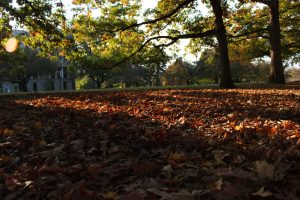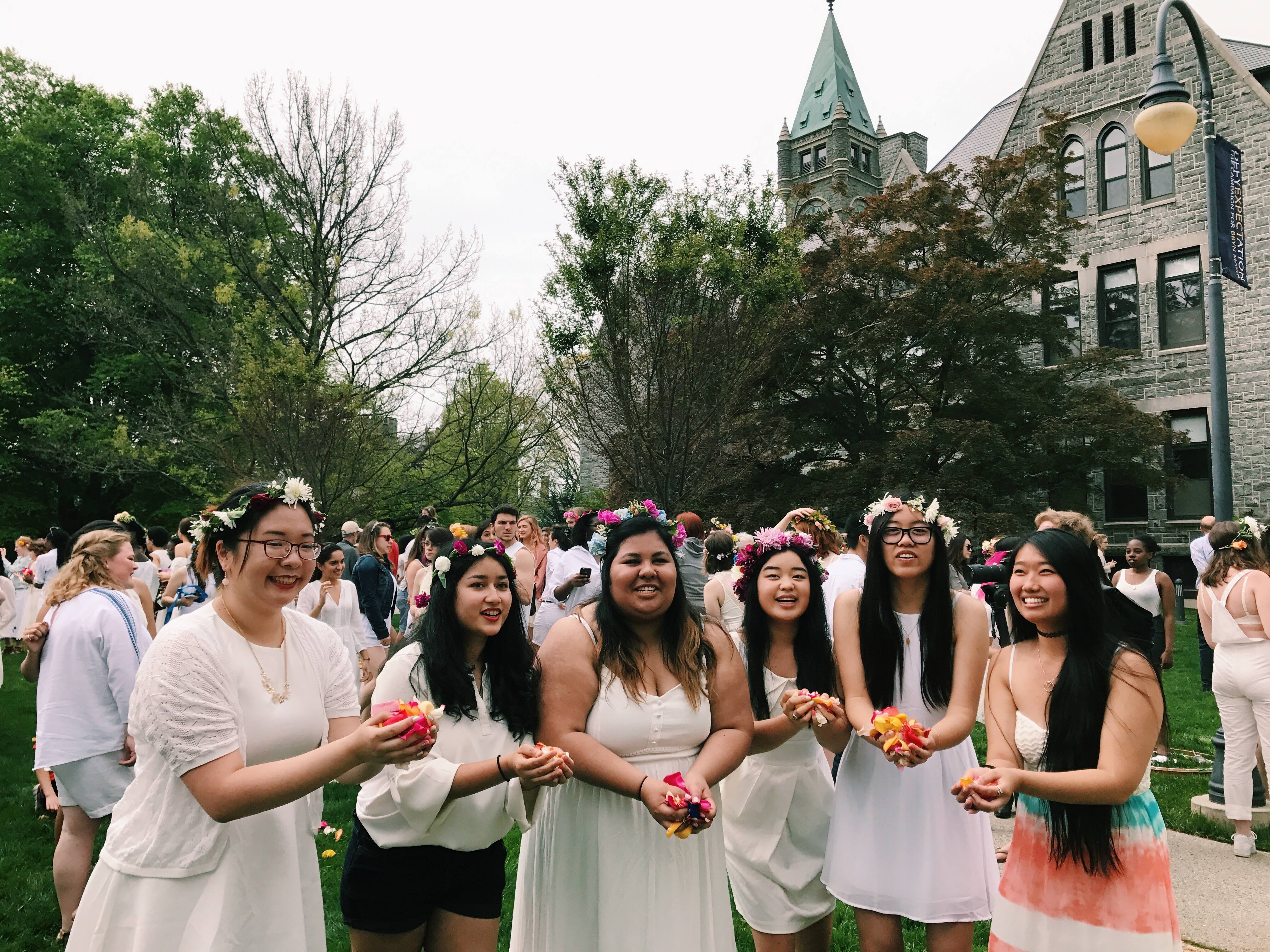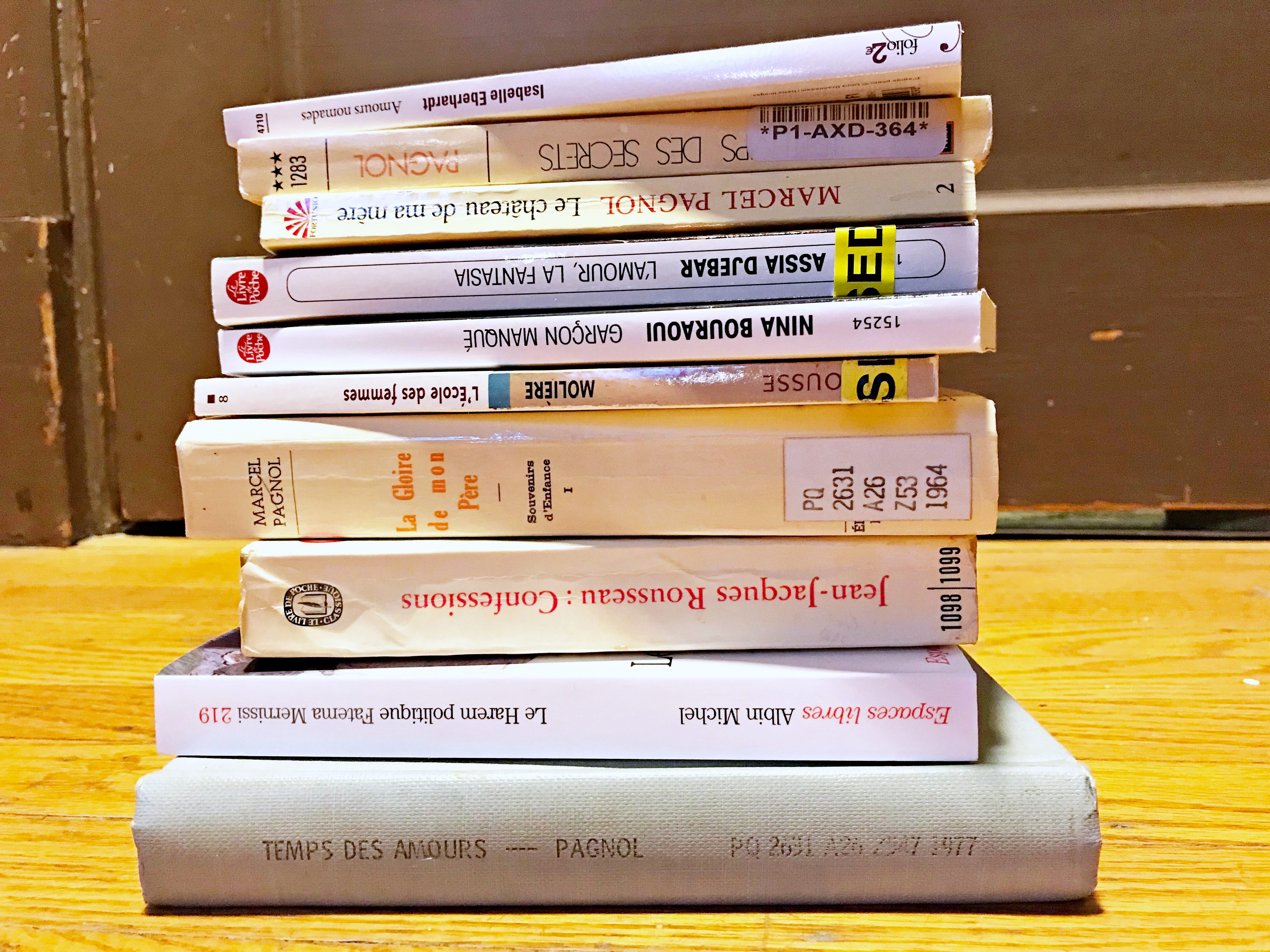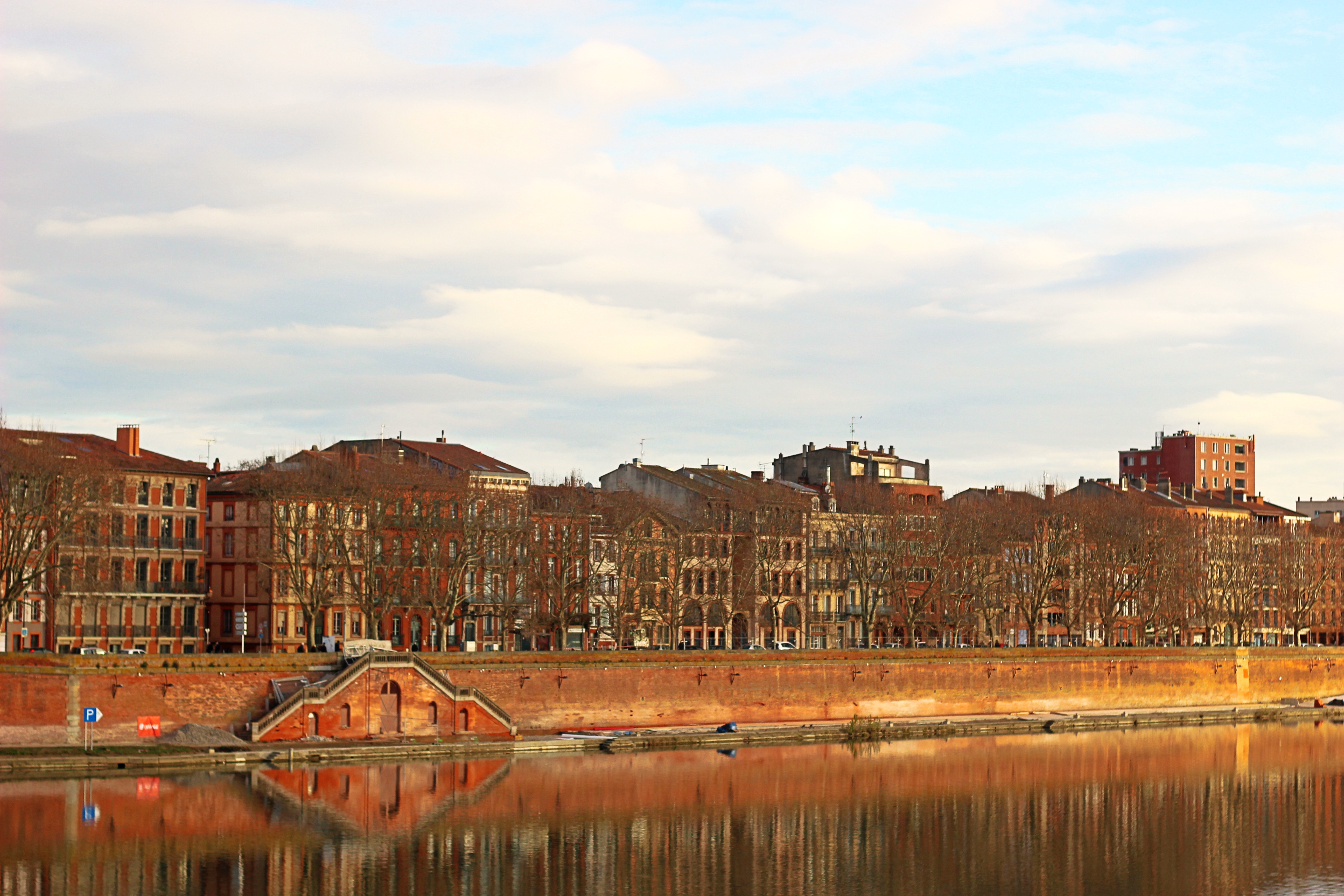
Hello all and welcome back from winter break. It is odd to be starting a semester without seeing familiar faces. Instead, my study abroad adventure in Toulouse has started and I am meeting new people and seeing new faces everyday.
My host parents Blanche and Michel were at the airport to pick me up. They moved back to Toulouse from Paris about 10 years ago, and live in a modern yet cozy apartment along the Canal du Midi. Their apartment’s walls and shelves display little sculptures, masks, paintings, and other objects that they have acquired over time. Each has its story; a Carnival mask from their honeymoon in Venice, a Japanese brushstroke painting of a relaxed cat, a pair of oxen bookends carved from the wood of a coconut tree and brought back by Michel’s uncle in Madagascar. I was happy to add Bryn Mawr to their collection, and gave them a painted owl ornament, which they hung from the mantel.
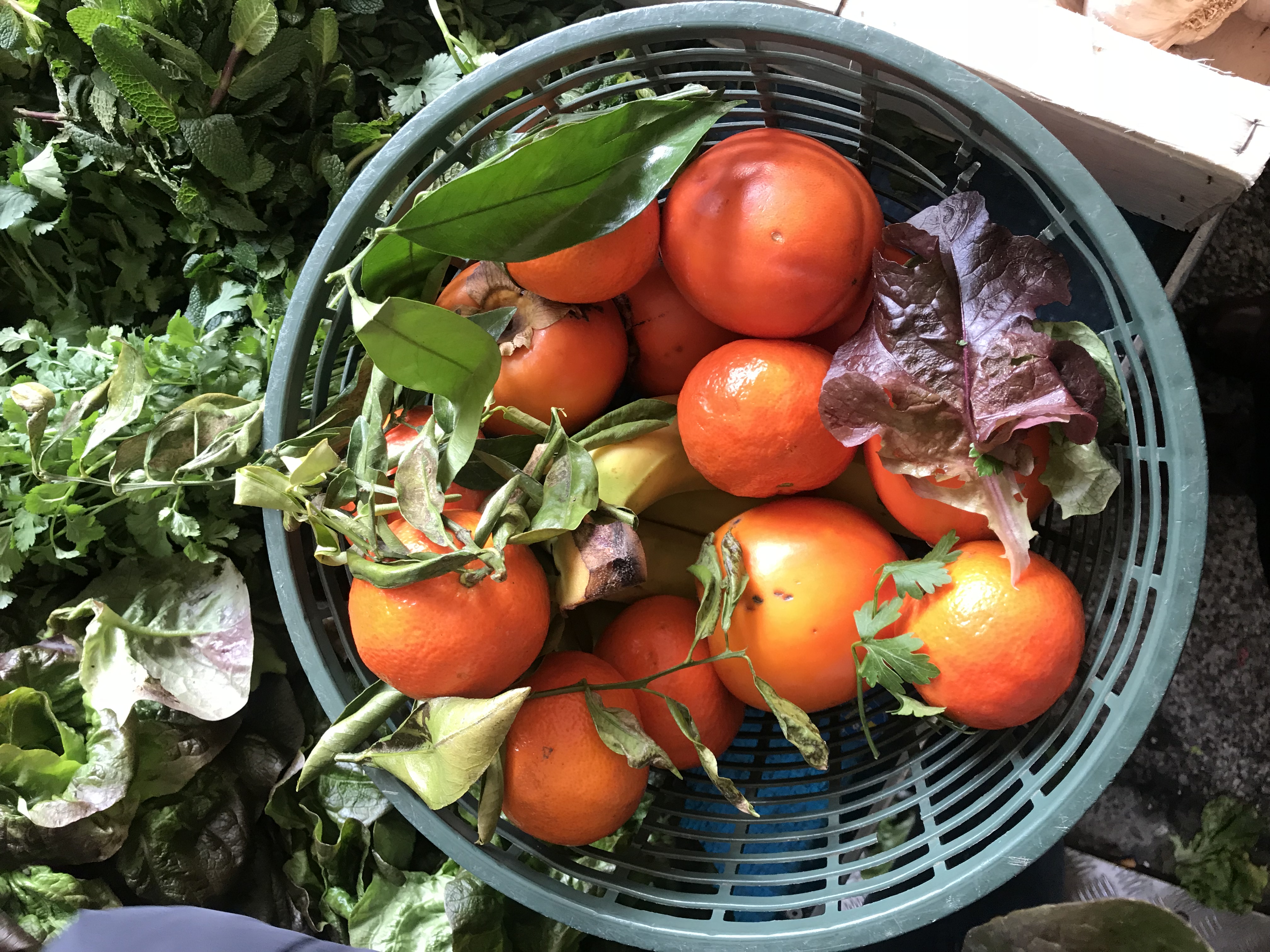
Sunday we went to the market that encircles a church to purchase groceries for the week. Whether there is snow, rain, or fog, Sunday is market day. Dozens of stalls surround the Church of Saint-Aubin to the east of the city. Michel and Blanche made a beeline for the apple seller. He was happy to see them. His cold had improved since last week. Unfortunately, his apples had not. The hail, while it had not altered their taste, had left puckered parts that made them look less appetizing. He threw his hands up in the air and sighed. Oh well. 
The next stop was the nut seller. Blanche bought a pound of freshly picked almonds from an orchard outside Carcassonne. Hazelnuts would be for next week, said Michel. The vegetable seller provided fresh lettuce, persimmons, bananas, clementines, parsley, and a slice of pumpkin. Behind the church we found fresh eggs, and next to the fresh eggs, live chickens for sale. We passed stalls of meats, handmade salamis, fresh pastas, hand-woven baskets, bouquets of wildflowers, and chickens roasting on a spit while their juices fell onto the golden brown potatoes in the roasting pan beneath.
This afternoon I took a short bike ride around town. Toulouse is a bike-friendly city, and there are bike rental stands in every neighborhood and a multitude of paths along the canal. You take out a bike and can replace it in any of the stands once you have finished the ride. Furthermore, if the ride lasts fewer than thirty minutes, it is free.

The city is a wonderfully warm color because of the pink and orange bricks that make up all the buildings. The light makes the bricks glow, especially during sunrise and sunset. Yet while the buildings are made of brick, the cast-iron balconies and wooden window shutters are usually painted in contrasting colors—turquoise, green, fuchsia, even violet. With its small winding cobblestone streets, cafes with tables clustered in the sunshine, and the aromas of food in the air, it is a city to explore.
My courses will start Monday, just as they do at Bryn Mawr. To all, bon courage!
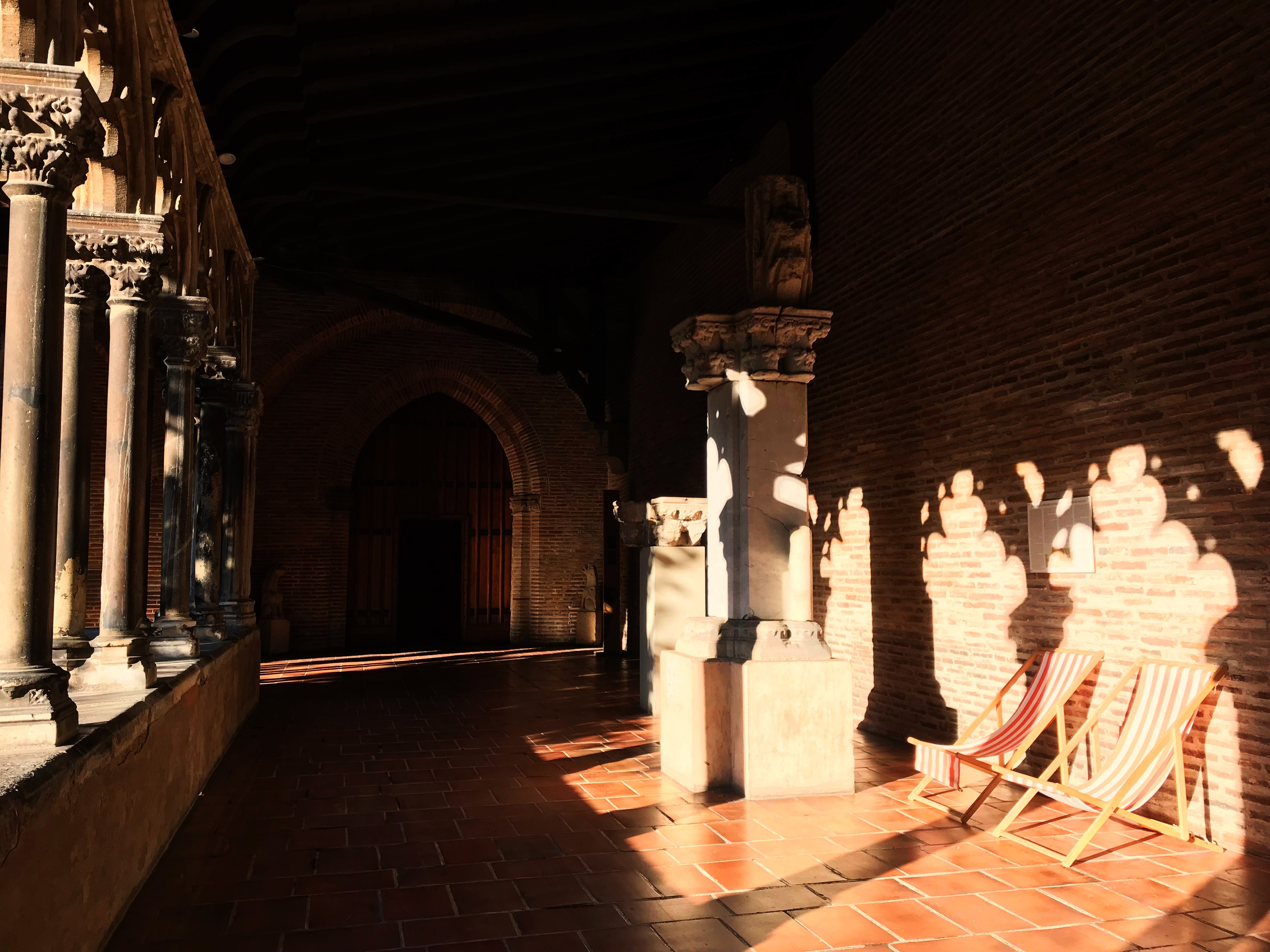

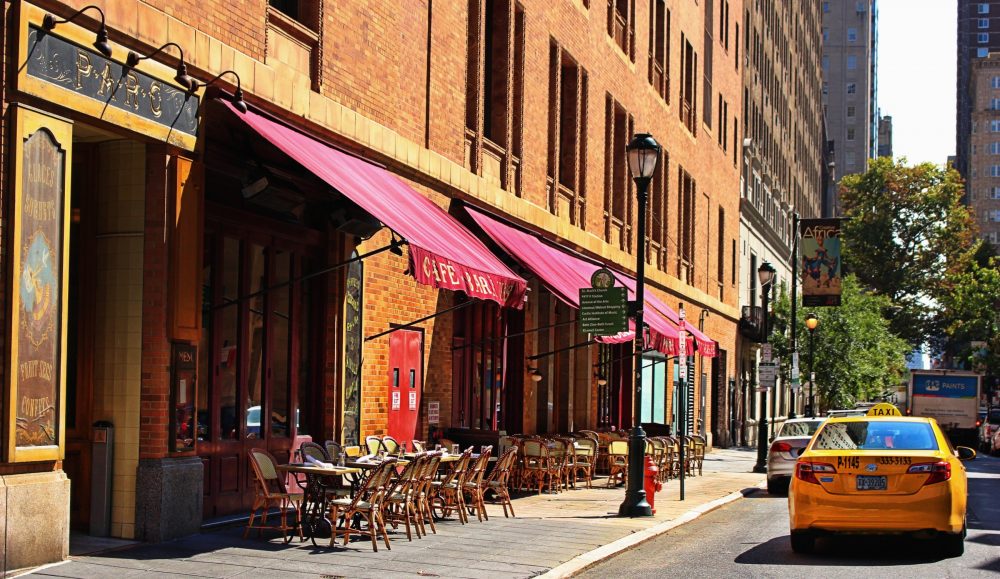
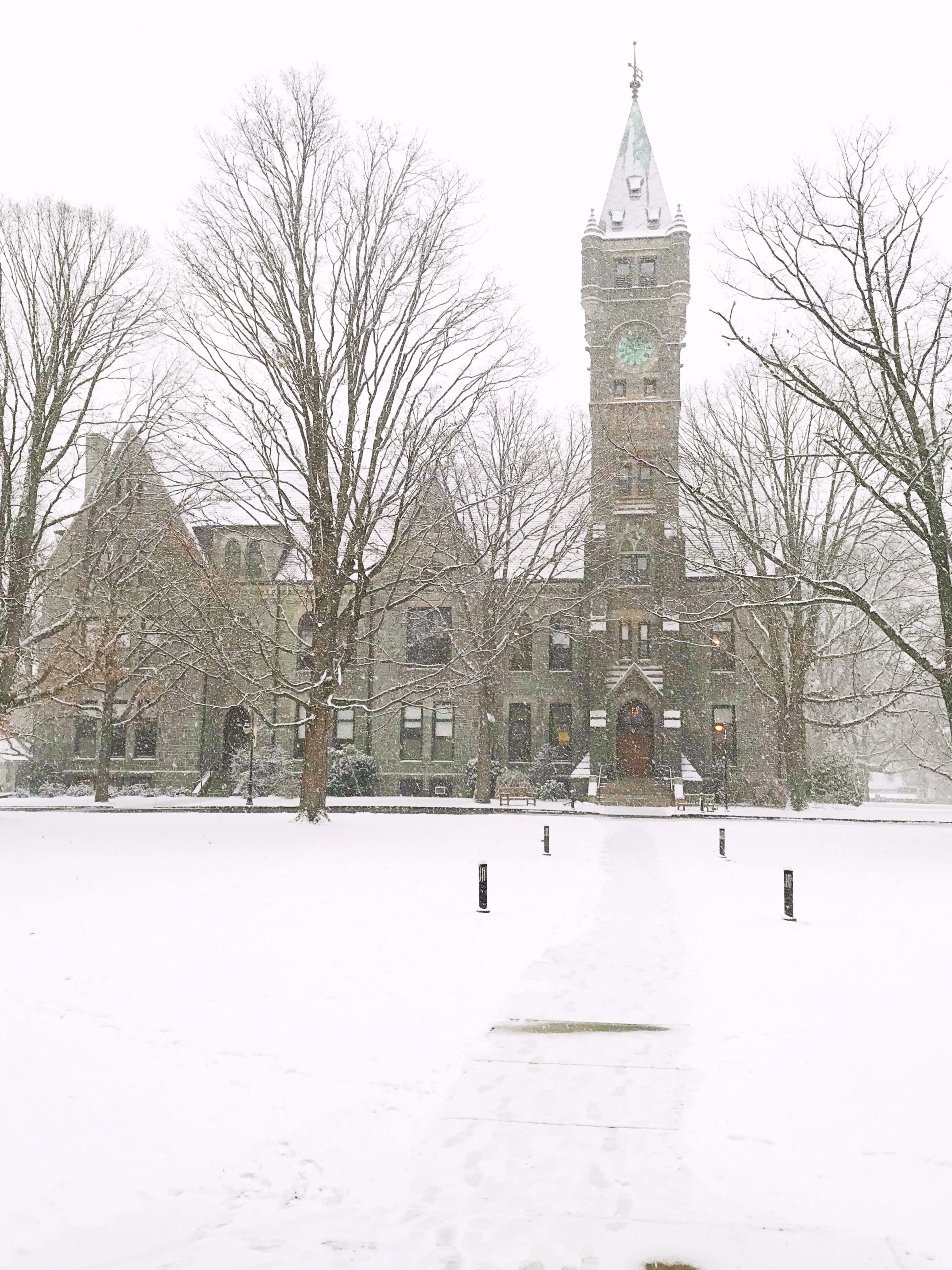
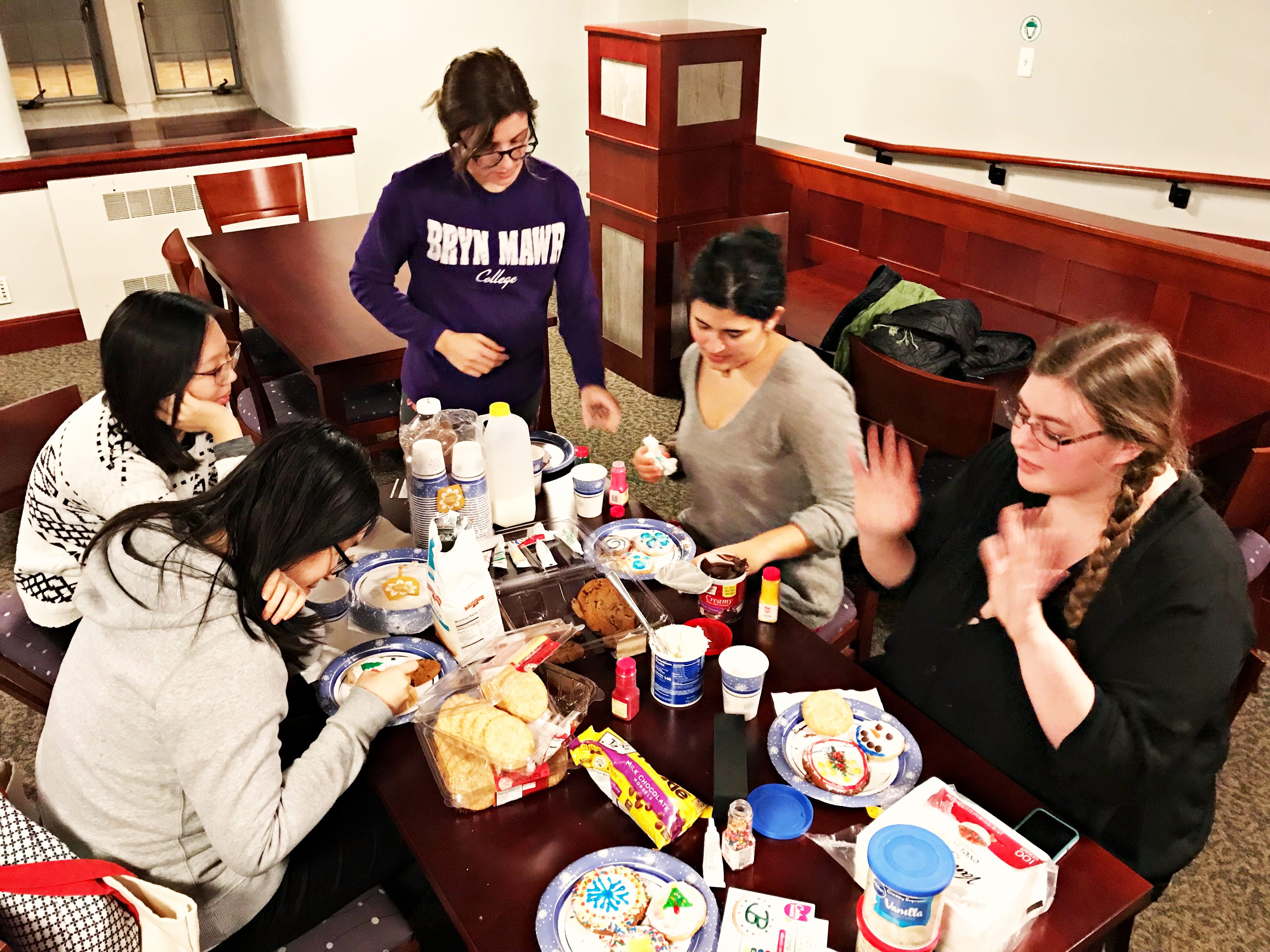


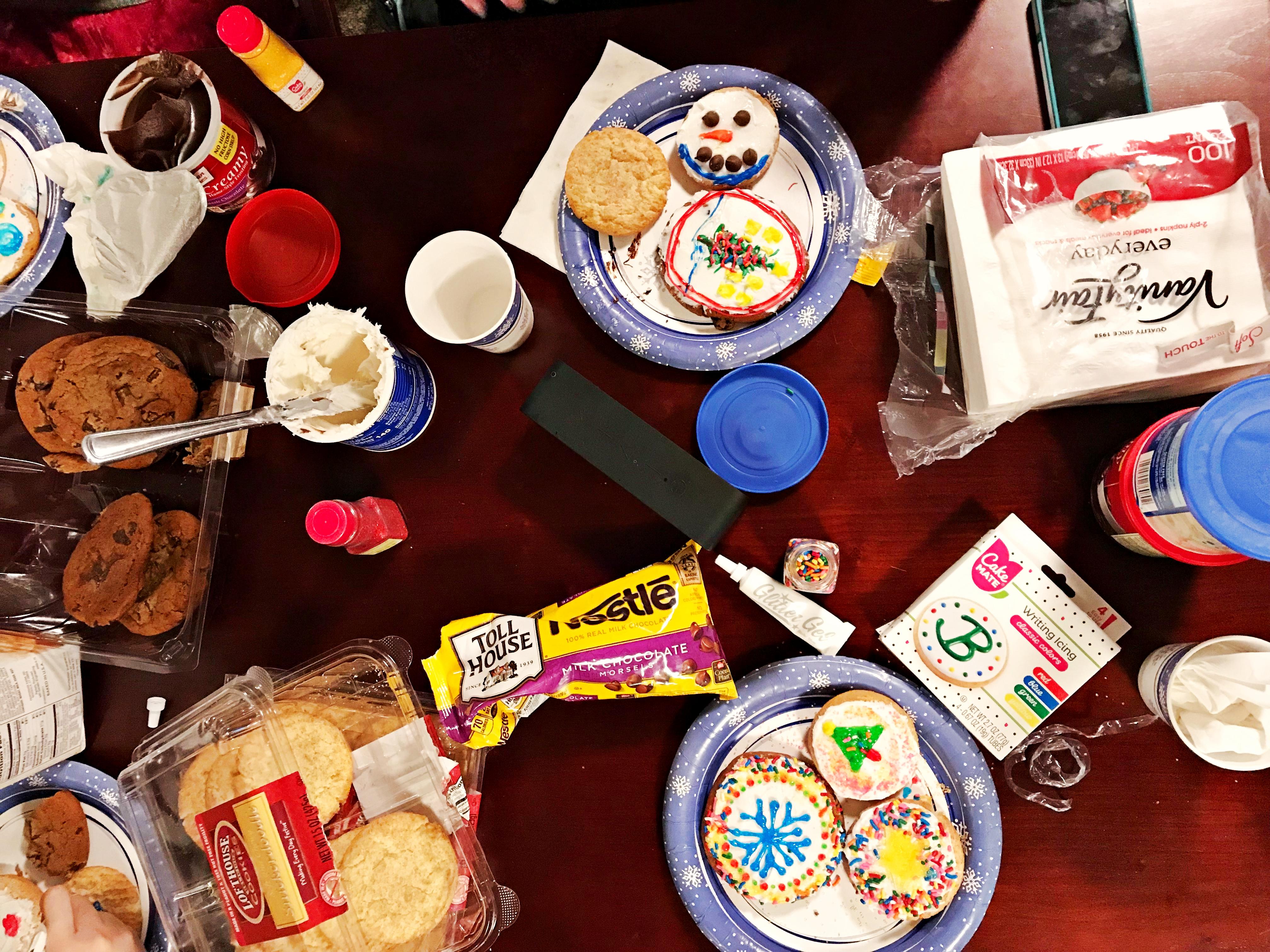
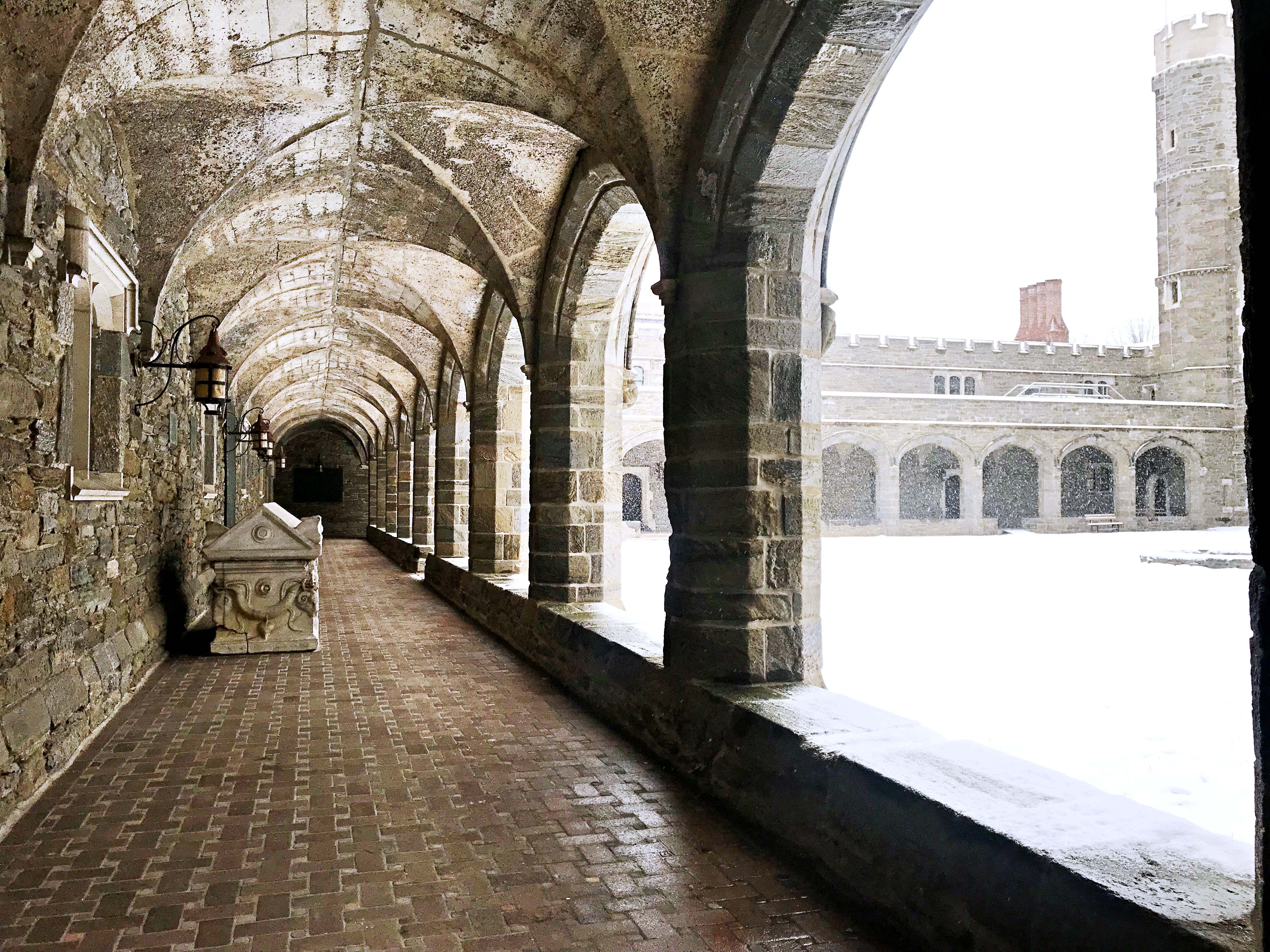
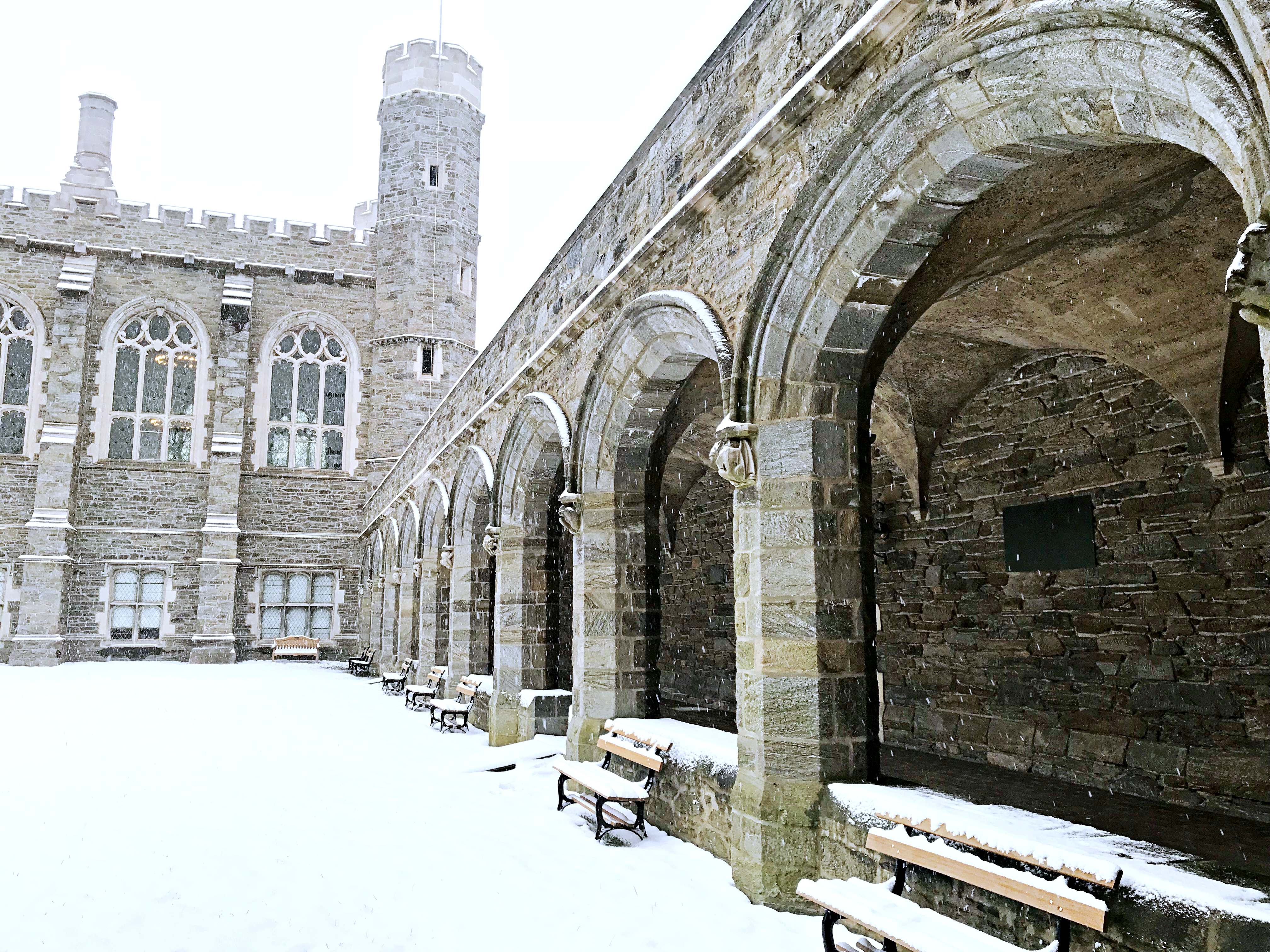
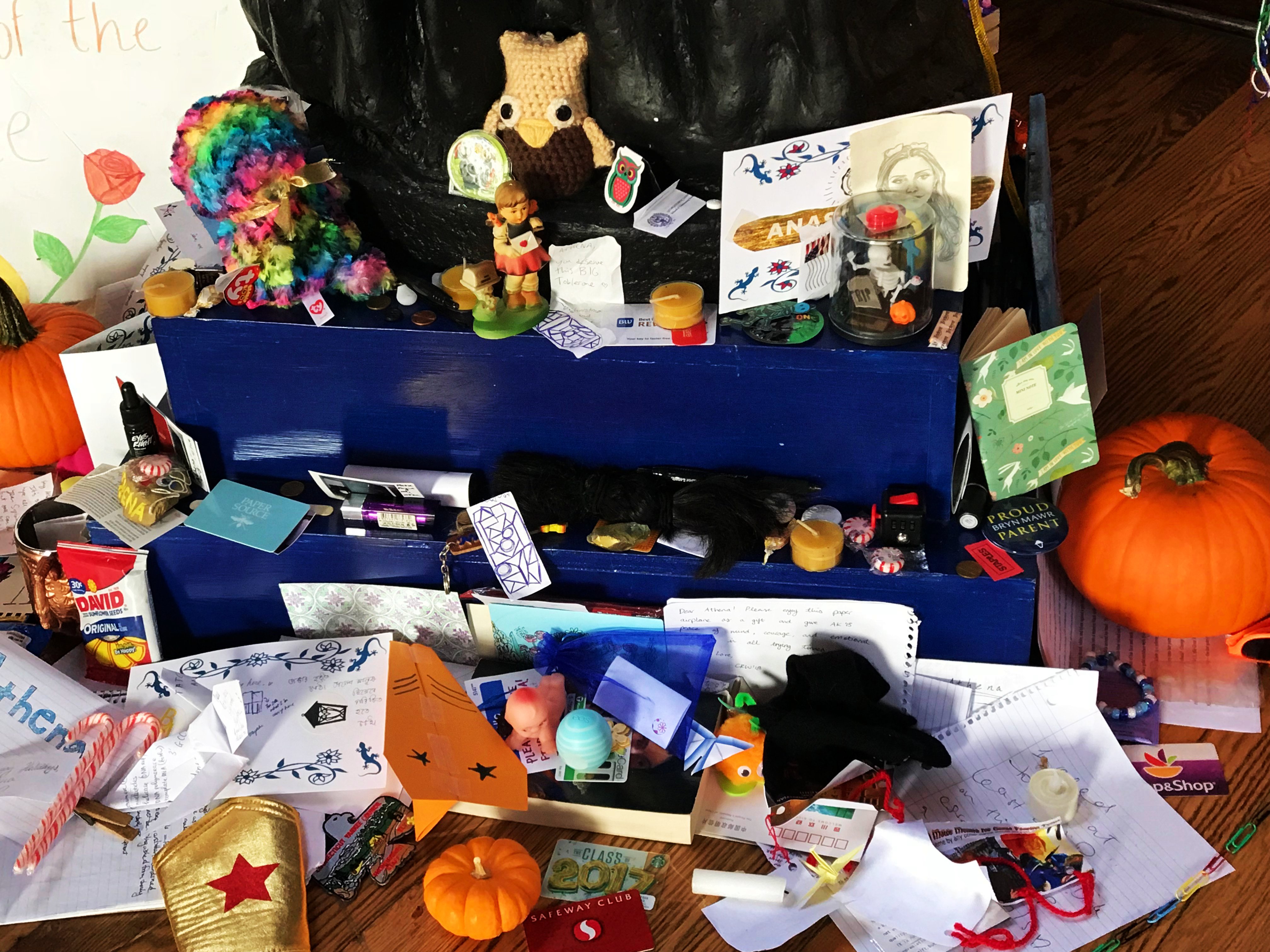
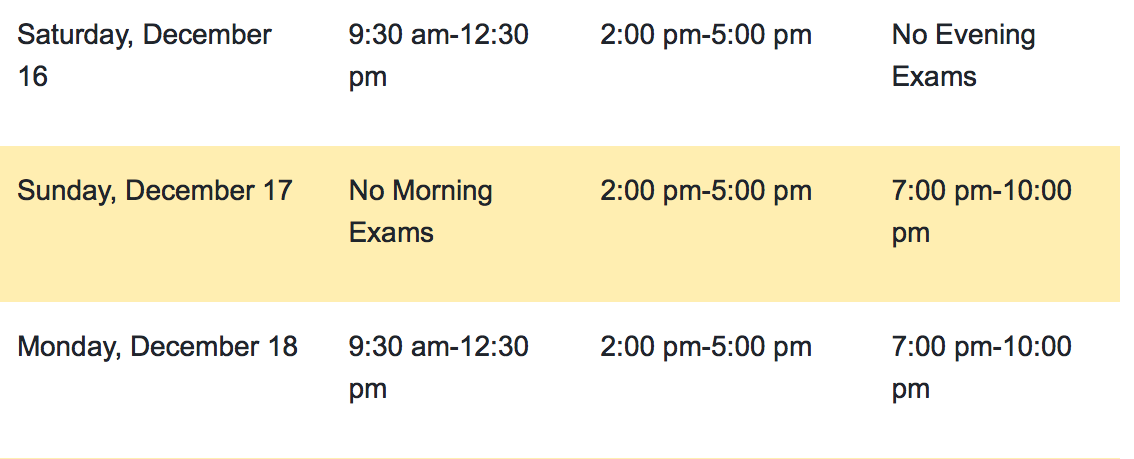
 During exam week some tips would be :
During exam week some tips would be :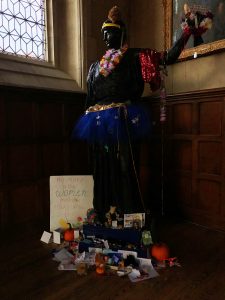
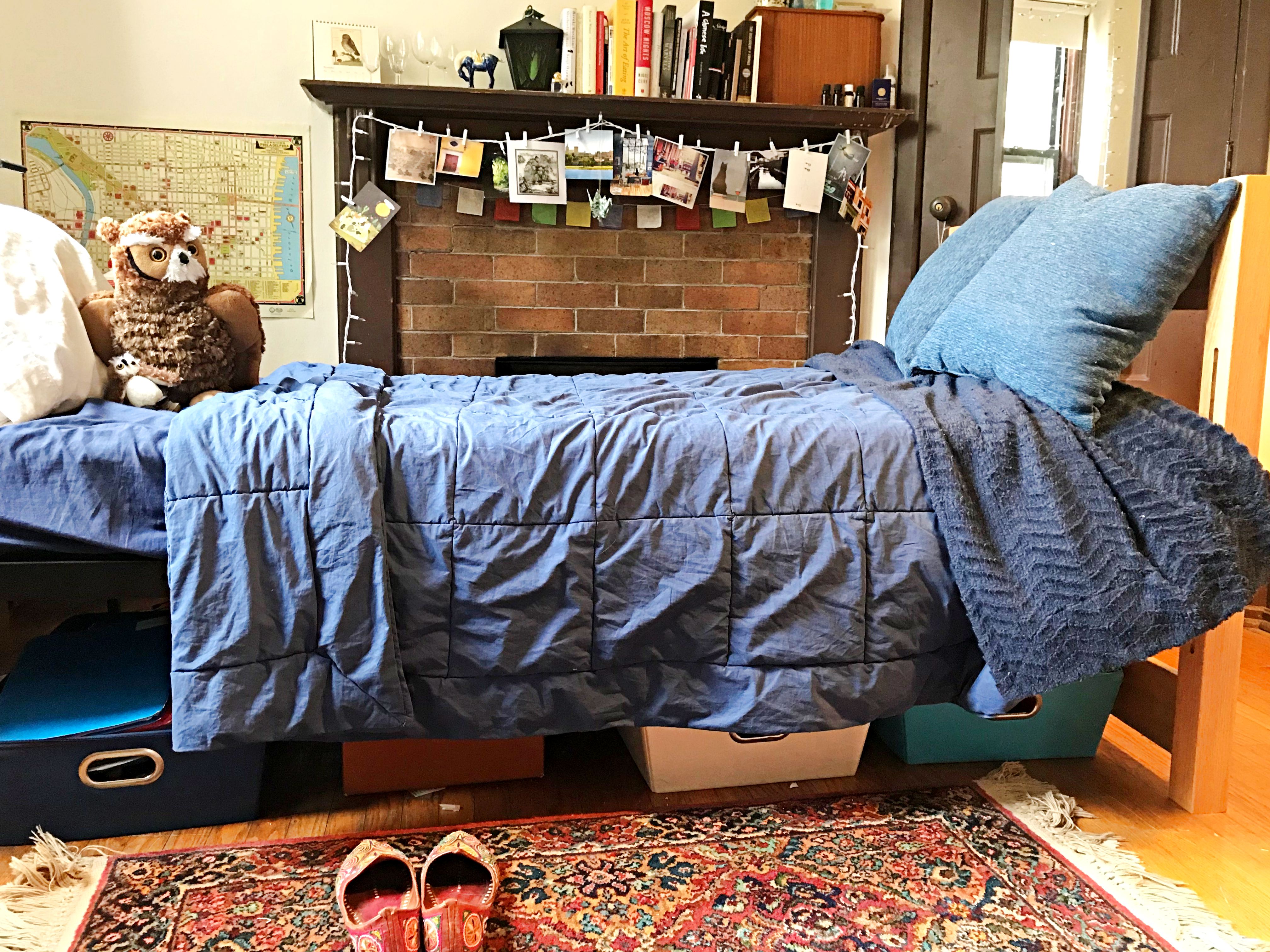



 Sunday at 9 o’clock, runners from the sophomore class placed the glowing ruby lanterns with wrought-iron little owls as the design at the feet of each first-year. Soon after, with the stunning backdrop of the cloisters of College Hall, and the song of the
Sunday at 9 o’clock, runners from the sophomore class placed the glowing ruby lanterns with wrought-iron little owls as the design at the feet of each first-year. Soon after, with the stunning backdrop of the cloisters of College Hall, and the song of the 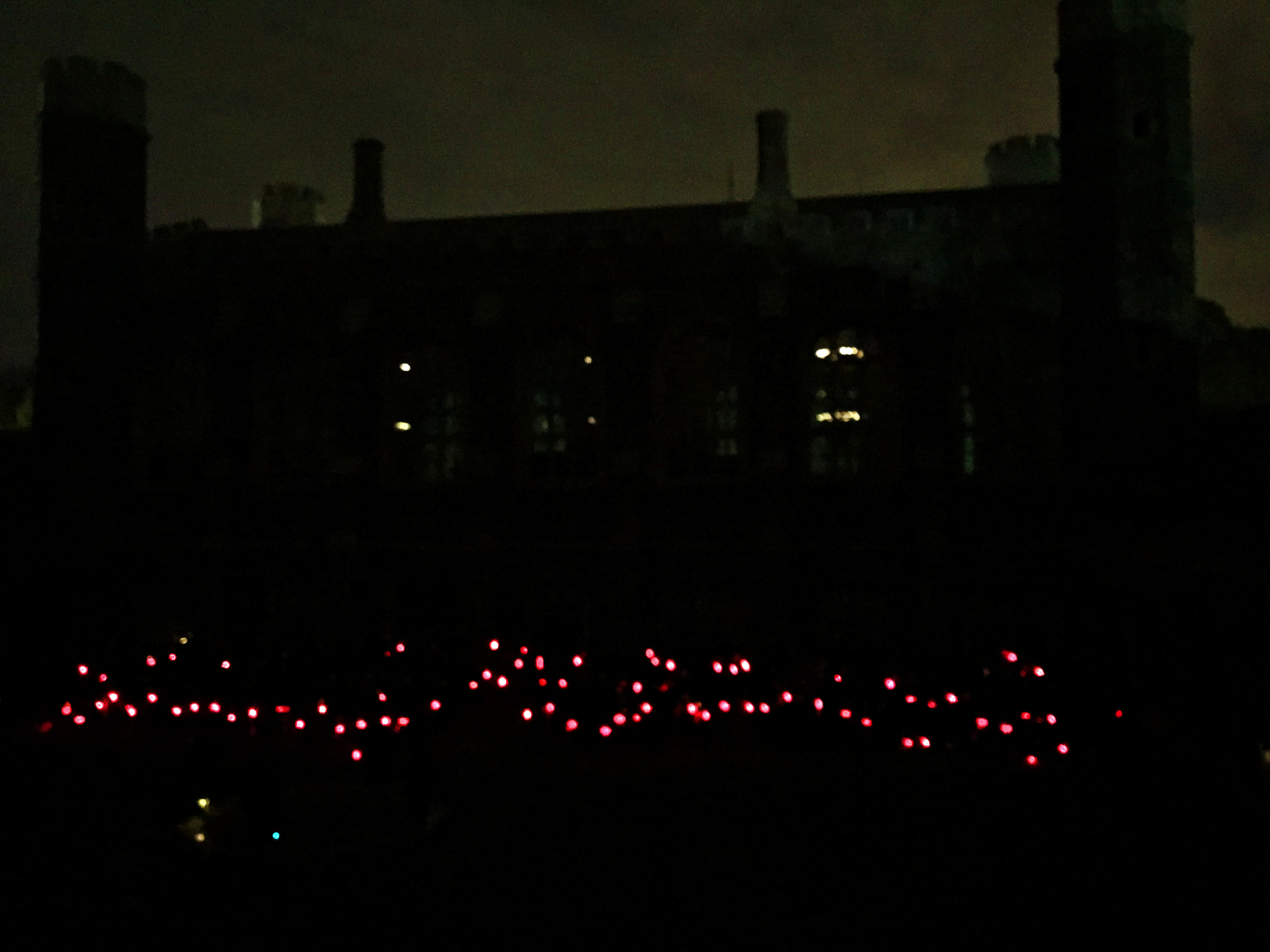 Lantern Night is a solemn tradition. It is beautiful because of the night sky, the black robes, the Greek songs, and of course, the light of our lanterns. At the closing, the first years picked up their lanterns and silently processed out of the cloisters. Just on the other side of College Hall, we could hear their excited screams and cheers.
Lantern Night is a solemn tradition. It is beautiful because of the night sky, the black robes, the Greek songs, and of course, the light of our lanterns. At the closing, the first years picked up their lanterns and silently processed out of the cloisters. Just on the other side of College Hall, we could hear their excited screams and cheers.
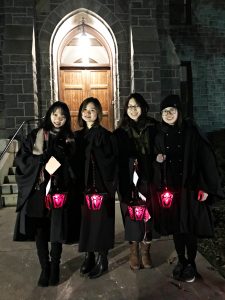
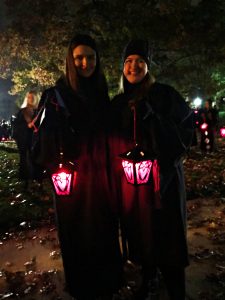
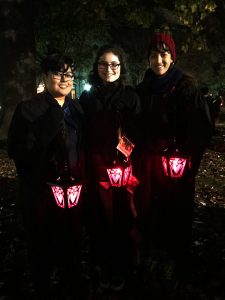

 Bryn Mawr is a small college with about 1,700 students. Because of our size, our classes are frequently small. One of my classes this year has six participants! However, even in my first year, class sizes ranged from ten to thirteen students. With smaller classes, we have more opportunities to delve deeper into the material. We ask questions, we debate, we share our opinions, and we get to know each other. Class discussions are essential at Bryn Mawr — I cannot remember a single Bryn Mawr class that did not involve discussion. Instead of silently taking notes while our professors lecture, we students are participating actively, by putting forth our ideas — what excites us about a subject, what puzzles us. Furthermore, our professors know us outside of class, they ask us how our hockey game went, or what we spent our Saturday doing, or how our other classes are going this semester. The small class sizes helps us build a greater camaraderie with our classmates and professors.
Bryn Mawr is a small college with about 1,700 students. Because of our size, our classes are frequently small. One of my classes this year has six participants! However, even in my first year, class sizes ranged from ten to thirteen students. With smaller classes, we have more opportunities to delve deeper into the material. We ask questions, we debate, we share our opinions, and we get to know each other. Class discussions are essential at Bryn Mawr — I cannot remember a single Bryn Mawr class that did not involve discussion. Instead of silently taking notes while our professors lecture, we students are participating actively, by putting forth our ideas — what excites us about a subject, what puzzles us. Furthermore, our professors know us outside of class, they ask us how our hockey game went, or what we spent our Saturday doing, or how our other classes are going this semester. The small class sizes helps us build a greater camaraderie with our classmates and professors.